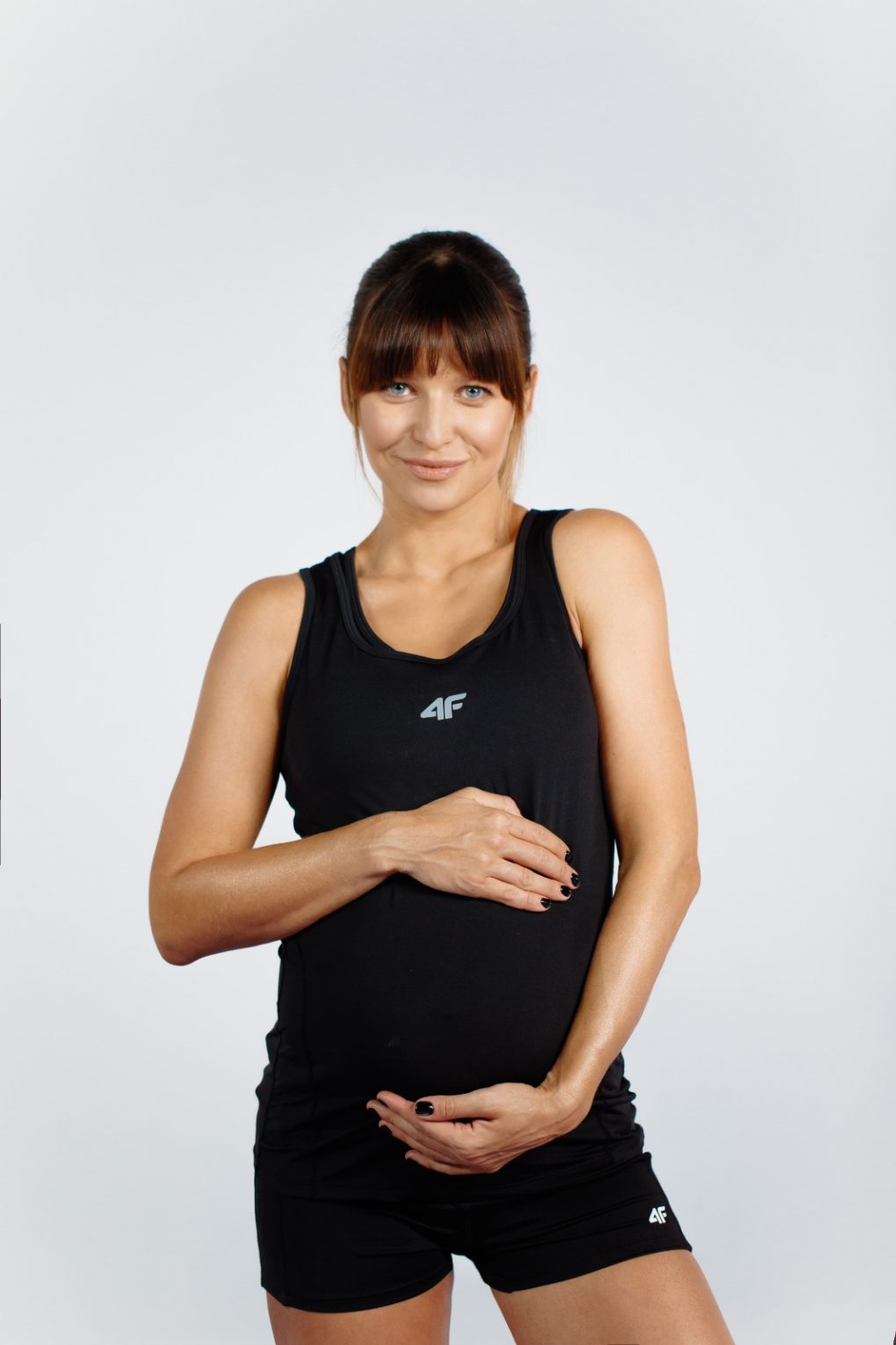
Training – sample exercises in the first trimester of pregnancy
The first trimester is just the beginning but numerous changes have already taken place in a woman’s body. You are probably at the stage of dealing with difficulties, such as nausea, tiredness, drowsiness, aching breasts and other ailments that accompany the first weeks of pregnancy (not all moms experience it, though :)).
Can I exercise in the first trimester of pregnancy?
However, you often don’t feel like exercising during this time, but if you feel perfectly fine and there are no contraindications, such as:
- bleeding
- cervical incompetence
- acute cases of gestosis
- hypertension
- diabetes
- severe maternal anemia
- pyelonephritis in pregnancy
- multiple pregnancy (twins)
- infections, common cold, fever
- previous premature births
- heart and lung diseases
- placenta previa after 26th week
- pre-eclampsia
and while exercising you do not feel: pain in your underbelly, dizziness and headache, shortness of breath, faints or flutter, why not try?
If that’s not the case, I advise you to start training from 12th – 14th week of pregnancy. If your doctor dissuades you from exercising, you can train your uterine fundus muscles, practise proper breathing, go for a walk and relax. Remember that first of all during the first trimester you can let yourself unwind with no remorse!
Training in the first trimester
Overexertion, especially during this time, is very dangerous. Even if you used to have an active lifestyle before pregnancy, remember to exercise with less strain, with gentle moves. The best training in the first trimester is a calm walk. Make sure your pulse doesn’t exceed 140 beats per minute. Exercises should not be too intense and depending on your well-being they should last between 30 to 60 minutes. Start with a five-minute training and gradually extend it by another 5 minutes until you are able to exercise for 30 minutes, but first of all take it easy during this period. I definitely advise you to wind down if you don’t feel like training. Stay in bed, relax, don’t force yourself.
Exercises during pregnancy should be chosen in a way that doesn’t strain or stretch abdomen muscles too much. Moreover, they should not be too intense – focusing on proper breathing is of highest importance as well as correcting your posture not to strain your spine over the next months.
The safest exercises are based to a large extent on the movement of arms and legs. Instead of intense training, stretch those parts of your body where you feel some sort of discomfort or tension. Perform the move to the extent that your body allows you and avoid working out on the verge of pain. Do not strain or stretch your abdomen. The right posture is especially important during pregnancy. A lot of daily activities that seem easy must now be done with special carefulness. Choose chairs and armchairs where you can fully rest your back and hips. You can put some extra pillows on the seat so that your knees are below the hips. Avoid half-sitting as it may result in your baby taking the breech position.
Training – the cure for pregnancy ailments?
Edema as well as hand and foot cramps are common problems during pregnancy. Swimming is a great cure for those!
Regular swimming improves respiratory and circulation efficiency.
Hydrostatic pressure along with water massaging the body may prevent venostasis and reduce swelling.
An additional benefit of swimming is strengthening your back and leg muscles as well as your shoulder girdle. I also recommend this kind of training if you have problems with backaches.
An example set of exercises for women in the first trimester of pregnancy:
I have prepared a short programme which includes basic and safe exercises. Repeat each exercise 10 to 15 times. If you feel up to it, repeat them in 2 or 3 series.
1. Do a squat and next get up slightly on your toes.
Stand with your legs aligned with hips, move your hips firmly backwards, knees parallel, back straight up, move the weight of your body to your heels, inhale while squatting an exhale while coming back to the starting position. Remember that your knees should not go beyond the line of your toes while squatting.
2. Step forward and deepen with alternating legs.
Keep your back straight up, pull shoulder blades together, keep arms, hip and knee in one line. Remember your knees should not go beyond the line of your toes.
3. Kneel with support and raise your arms forward and sideways.
Change the side after ten repetitions. Try to move your palm back parallel under your shoulder.
4. Support on your forearms and knees – march on your forearms.
Try to keep a rigid torso and don’t increase your lordosis in the lumbar section.
5. Raise your hips to a straight line of your body while supported on one side with your forearm.
An easier position – keep your supporting leg bent in the knee to 90 degrees.
6. Raise your bent knee while kneeling with forearm support.

7. Raise your hips to the ‘chair’ position.
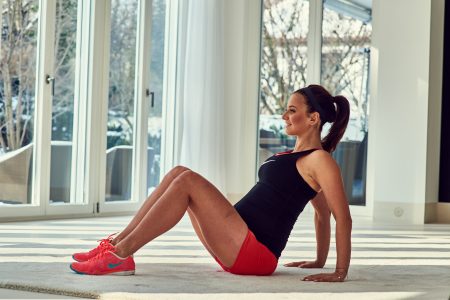
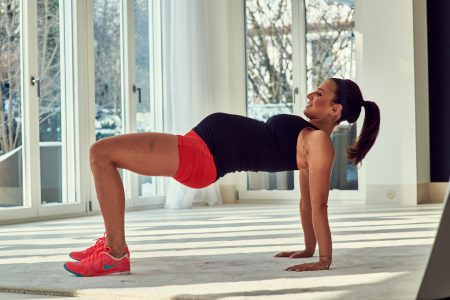
Lean back with your forearms the width of the shoulders. Raise your hips to align them with a straight body line, keep buttocks tight.
8. Bending arms (as in the ‘chair’ position) with lean back support.
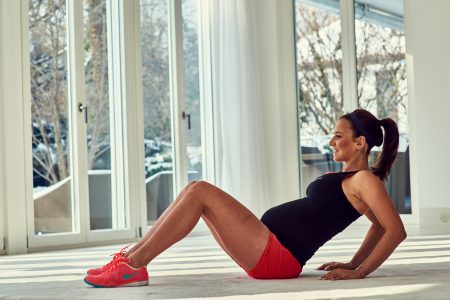
Engage only the shoulder girdle, try to set apart the work of your abdomen muscles during this exercise.
You will find more exercises in my book “Healthy mom – a healthy mom’s handbook” or on my “Healthy mom” DVD and soon also in my application Diet&Training by Ann.



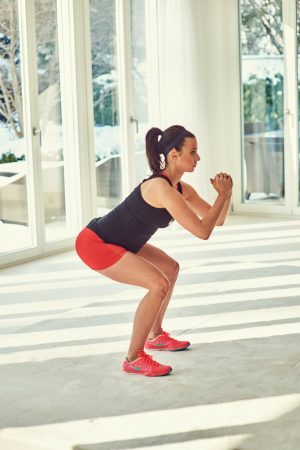
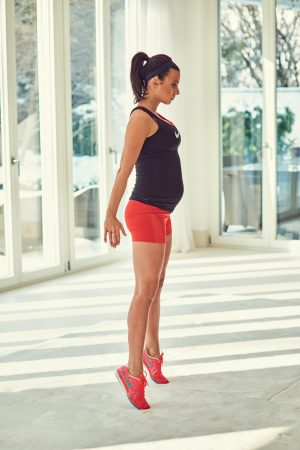













Comments No Comments
Join the discussion…